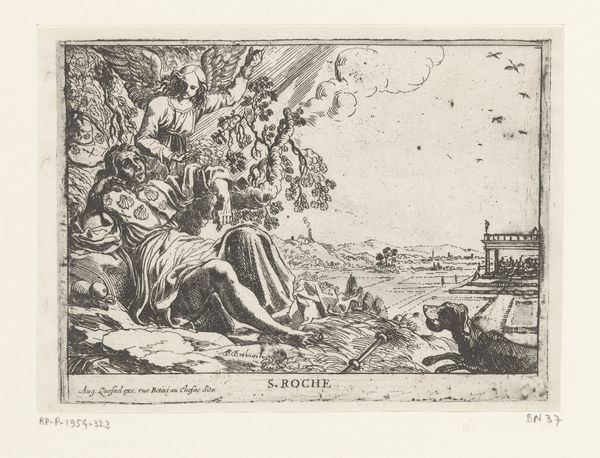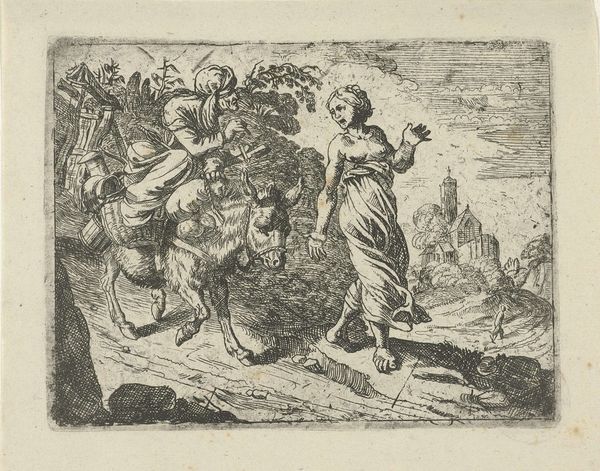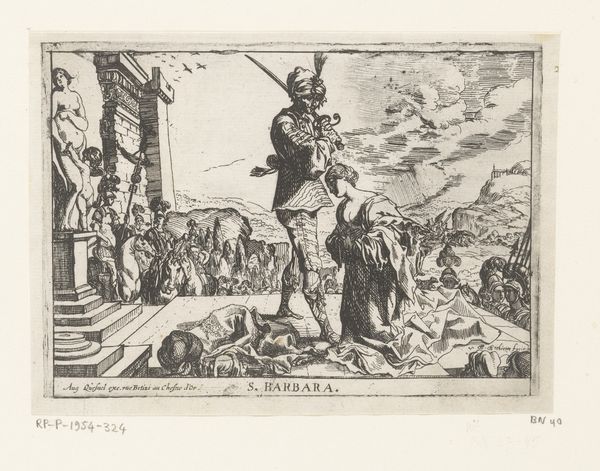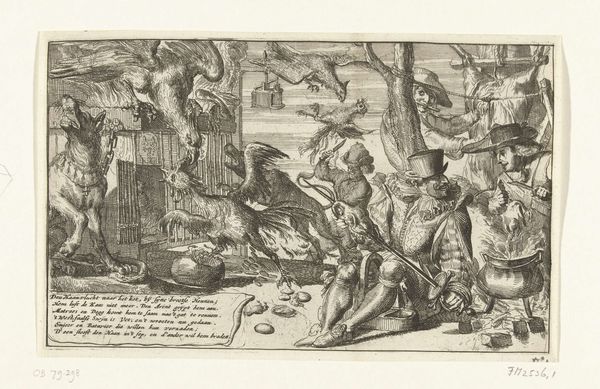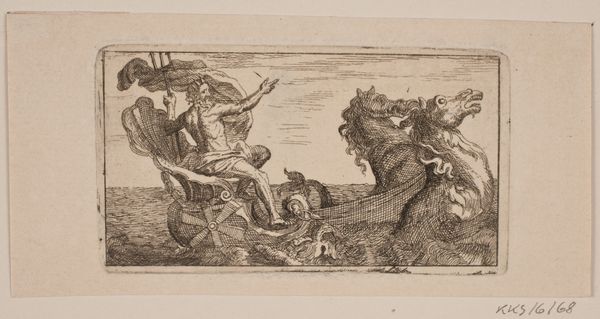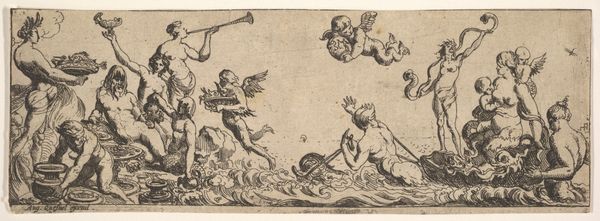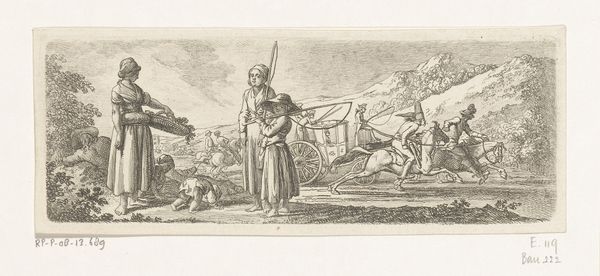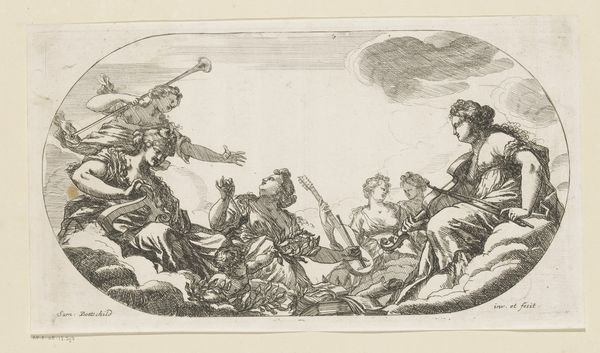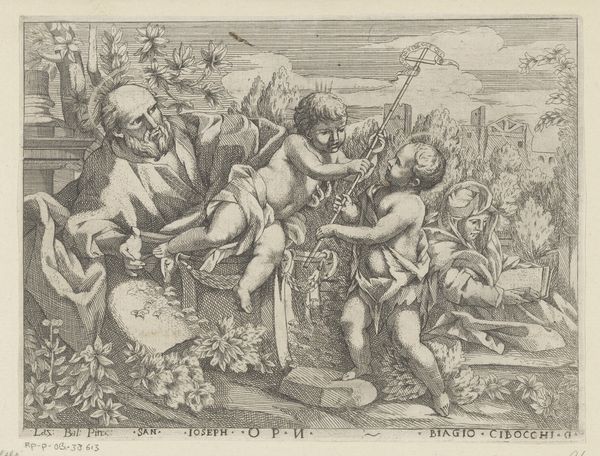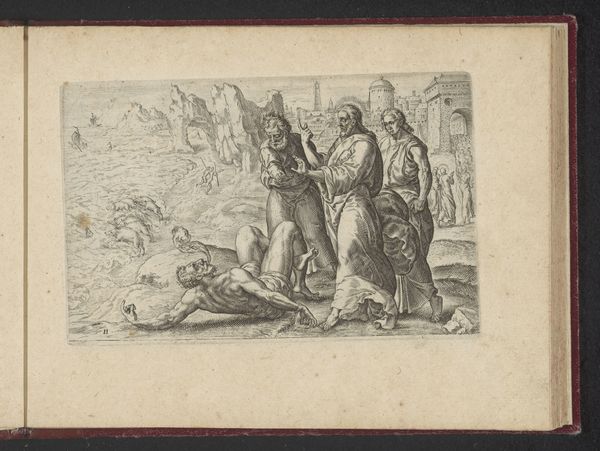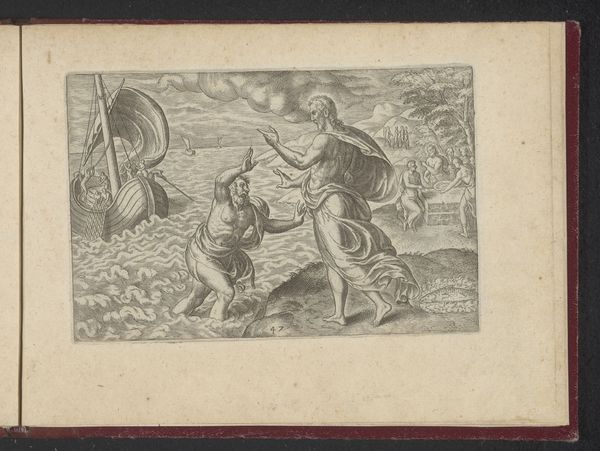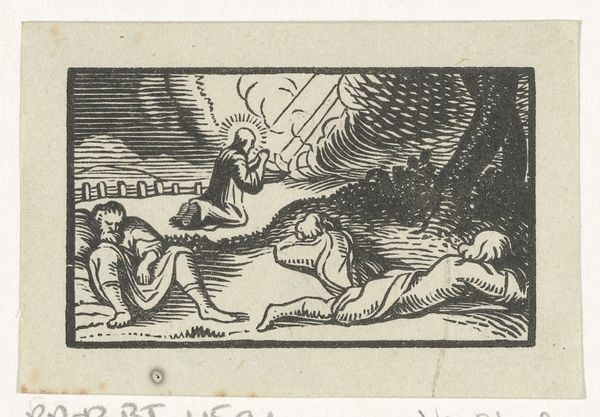
drawing, ink, engraving
#
drawing
#
allegory
#
baroque
#
figuration
#
ink
#
history-painting
#
engraving
Dimensions: height 62 mm, width 166 mm
Copyright: Rijks Museum: Open Domain
Editor: Here we have Pierre Brebiette’s "Amazone door saters voor Pan gebracht", made between 1608 and 1650. It’s an engraving currently held at the Rijksmuseum. The scene feels very dramatic, like a stage play unfolding. What do you see in this piece that perhaps I'm missing? Curator: Well, considering the era and the subject matter, the artist certainly intended this drawing to function within a specific intellectual and social framework. History painting, even in a smaller format like this engraving, had a very public role, didn't it? The imagery, drawn from mythology, served as a vehicle for discussing contemporary political and moral ideas. What socio-political values were the elites intending to display through the commissioning or ownership of such engravings? Editor: So, you are saying this wasn't simply art for art's sake? That it served a function within the cultural landscape of the time? Curator: Precisely. Consider the figures. We have satyrs, Pan, an Amazon – all potent symbols in the visual language of the Baroque period. Think about what these figures represented to viewers at the time. Pan, the god of the wild, of untamed nature, often contrasted with ideas of civilization and order. What would it signify to present the Amazon, a figure representing female strength and independence, as being brought before Pan? What power structures were reinforced by this scene? Editor: I see. So the submission of the Amazon is not just a mythological scene, but it's commenting on, perhaps even reinforcing, existing societal power dynamics and gender roles of the time? Curator: Exactly. How do you think access to and interpretation of imagery like this shaped public discourse, or reinforced dominant ideologies, in the 17th century? Was this image seen differently depending on social class, gender or political affiliation? The public role of such artworks cannot be overstated. Editor: This really changes how I see the piece. I was focusing on the visual drama, but now I see it as part of a bigger cultural conversation. Curator: Indeed, seeing art within its historical and social context provides a much deeper appreciation of its meanings and motivations. Editor: Thank you, this really helped open my eyes!
Comments
No comments
Be the first to comment and join the conversation on the ultimate creative platform.
